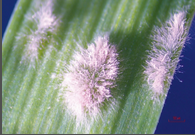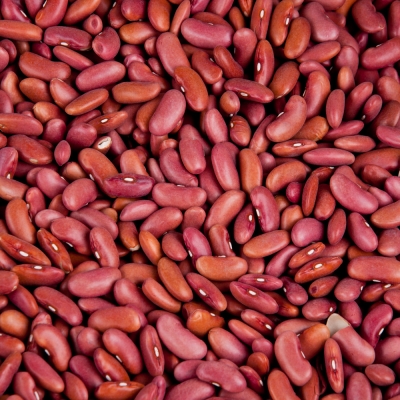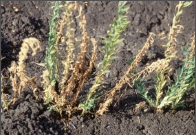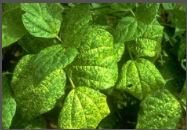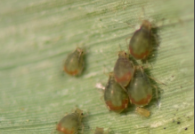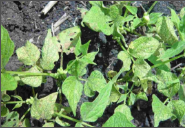Triloki Rajma (K-198): Its growth is dwarf similar to bushy crop. It has wide leaves, deep green, white flowers and thick grains which are light yellow in color. The grains are delicious in taste and is cooked well. The plant is 45-55cm in height and the crops get ready for harvest in 98-100 days. The variety is resistant to anthracnose, wilt and leaf rot. But in Sangla hills there is medium danger of Anthracnose disease. It gives an average yield of 10-12qtl/acre.
Baspa (B. R. C.-8): It is a semi dwarf variety which is recommended for upper hilly areas. The variety is resistant to anthracnose. It has deep pink color grains which are thick. The variety gets ready in 10-120 days. It gives an average yield of 7.5-8qtl/acre.
Kailash (S.R.C.-74): It is a semi dwarf variety which gets mature in 120-125 days. The variety is recommended for 1700-3000m high in Kinnour district under rainfed or irrigated areas. This variety has wide leaves which are yellow in color. The legumes are green in color having red spots on it when young, which becomes orange color at maturity.
Jwala (H.P.R-12): The variety is approved for 1100-1800m high areas of Kullu, Barot, Chamba and Shimla. It is early maturing variety which gets mature in 75-80 days. It has straight and dwarf plant. The legume is 8-10cm long and per legume contains 3-4 grains. It has deep red color grains. It gives an average yield of 5-6qtl/acre.
Him-1: It is a dwarf and early maturing variety which gets mature in 80-90 days. The legumes are 10-13cm long and every legume contains 4-5 grains. The grains are light pink in color having deep red spots on legumes. It gives an average yield of 4qtl/acre.
Kanchan (H.P.R.-3.5): It is a dwarf and early maturing variety. It is approved for growing in medium and high hilly areas. It has thick and deep pink color grains. It gives an average yield of 5-6qtl/acre.
Other state varieties:
PDR 14 (Uday): Released in 1987. This variety has bushy crop and legumes are green in color. It has 40-50cm plant height. In irrigated areas and in good crop management areas, it gives an average crop yield of 8-10qtl/acre. It has spotted grains having an average weight of 38-40gms per 100 seeds.
VL Rajma 125: Suitable for timely sown of Uttarakhand Hills. 4-5 seeds per pods and 100 seed weight about 41.38 gm.
RBL 6: Suitable for irrigated areas of Punjab state. 6-8 seeds per pod and seeds are of light green color.
Other high yielding varieties grown in India are HUR 15, HUR-137, Amber and Arun. Also Arka Komal, Arka Suvidha, Pusa Parvathi, Pusa Himalatha, VL Boni 1, Ooty 1.
